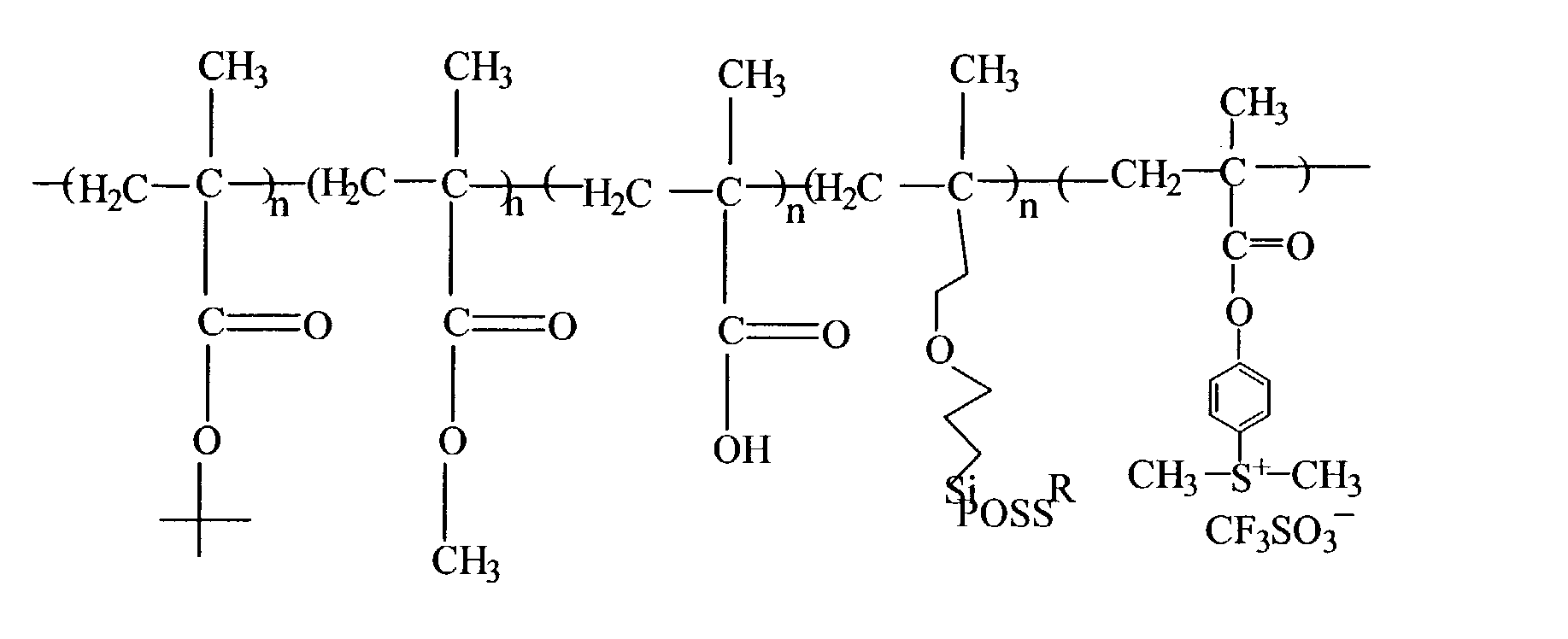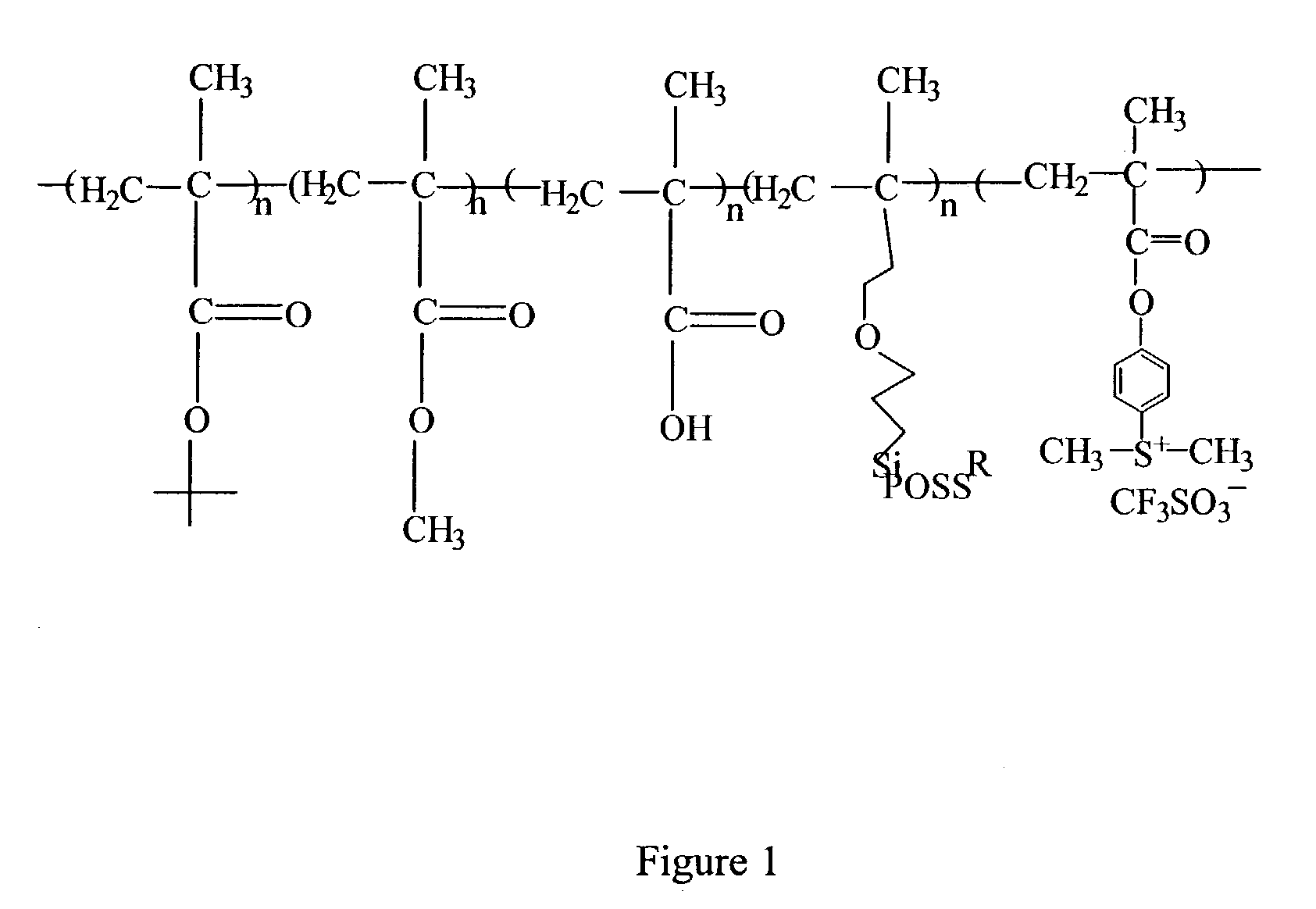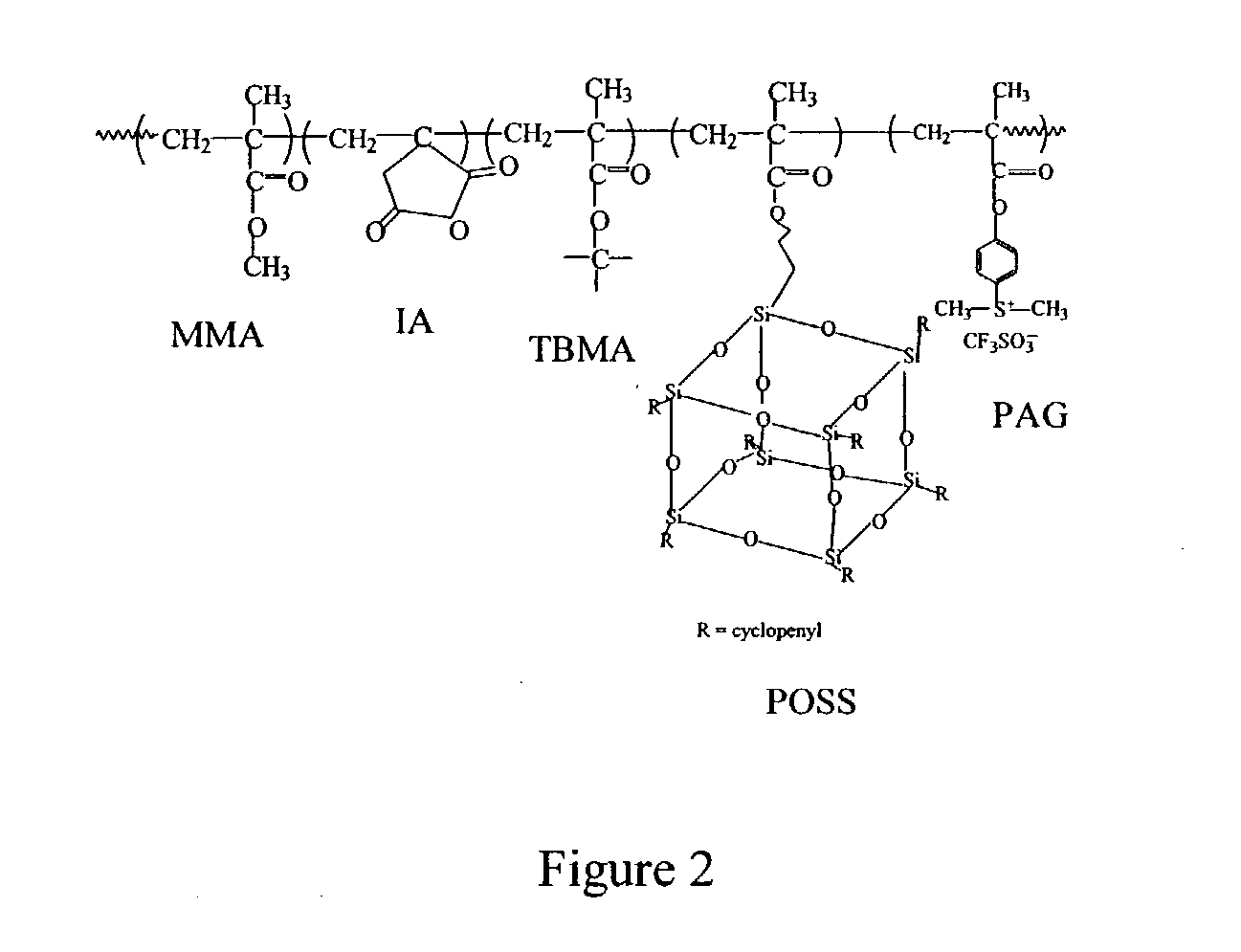Nanocomposite negative resists for next generation lithographies
a lithography and nanocomposite technology, applied in the field of new high-resolution negative resists, can solve the problems of non-uniform distribution of actual exposure in the pattern writing area, no significant breakthrough, serious intrinsic problem of ebl, etc., and achieve the effects of high contrast, high resolution, and high sensitivity
- Summary
- Abstract
- Description
- Claims
- Application Information
AI Technical Summary
Benefits of technology
Problems solved by technology
Method used
Image
Examples
example 1
Preparation of a Methacrylate-Based CA Resist Incorporating a Polyhedral Oligosilsesquioxane (POSS)
[0092] All monomeric components used in the polymer preparation were purchased from Polysciences (Warrington, Pa.) or Aldrich (Milwaukee, Wis.). The liquid monomers, tert-butyl methacrylate (TBMA), methyl methacrylate (MMA), and methacrylic acid (MAA) were vacuum distilled under nitrogen prior to use. The inhibitor-free polyhedral oligosilsesquioxane, 3-(3,5,7,9,11,13,15-heptacyclopentylpentacyclo-[9.5.1.13,9.15,15.17,13]octasiloxane-1-yl)propyl methacrylate, abbreviated propyl methacrylate POSS, (Aldrich) was used as received. Tetrahydrofuran (THF) was distilled from sodium and benzophenone under nitrogen. Hexane was reagent grade and used as received. α,α-Azobis(isobutyronitrile) (AIBN) was recrystallization twice from methanol prior to use. Polypropylene glycol methyl ether (PGME) was obtained from Aldrich and used as received. The developer AZ® MIF 300, obtained from AZ Electronic...
example 2
Characterization of a Methacrylate-Based CA Resist Incorporating a Polyhedral Oligosilsesquioxane (POSS)
[0094] The thermal stability of all samples was measured by a Perkin Elmer Thermogravimetric Analyzer 7 (TGA). TGA samples were heated at a rate of 20° C. / min with an O2 or N2 gas flow rate of 25 cm3 / min. Glass transition temperatures (Tg) were measured by a Perkin Elmer Differential Scanning Calorimeter 7 (DSC). DSC samples were heated at a rate of 20° C. / min. Molecular weights were measured by a Millipore Waters GPC using THF as an eluent and polystyrene calibration standards.
[0095] Polymer compositions were obtained by a combination of 1H NMR and TGA analyses. The 1H NMR spectra were obtained on a Bruker Win-500 NMR spectrometer using acetone-d6 as a solvent. The relative composition of the monomers POSS, MMA, TBMA and MAA in a resulting polymer sample were calculated from the area ratios of their characteristic peaks. These data are presented below in Table 2. In parallel, t...
example 3
Etch Study and Polymer Morphology Characterization of a Methacrylate-Based CA Resist Incorporating a Polyhedral Oligosilsesquioxane (POSS)
[0097] Resist solutions (typically 5-10 wt %) were formulated by dissolving polymer samples, along with 2% by weight (relative to the polymer) of the photoacid generator (PAG) triphenyl sulfonium hexafluoroantimonate, in PGME. The low-POSS samples (<22.5% POSS) were readily soluble in PGME (Polypropylene glycol methyl ether) without heating, while the high-POSS sample (30.5%) must be heated to 40° C. to achieve fast dissolution. The resist solutions were filtered through a 0.2 μm Teflon micro filter to remove any undissolved residue.
[0098] Thin films were spin cast on 3-inch silicon wafers on a Brewer / CEE Model 6000 Wafer Processing Track System using a spinning speed of 1500 rpm and spinning times of 60 sec. The films were then baked on a hot plate at 125° C. for 3 min. After cooling to room temperature, the resist-coated wafer was placed in th...
PUM
| Property | Measurement | Unit |
|---|---|---|
| roughness | aaaaa | aaaaa |
| diameter | aaaaa | aaaaa |
| glass transition temperature | aaaaa | aaaaa |
Abstract
Description
Claims
Application Information
 Login to View More
Login to View More - R&D
- Intellectual Property
- Life Sciences
- Materials
- Tech Scout
- Unparalleled Data Quality
- Higher Quality Content
- 60% Fewer Hallucinations
Browse by: Latest US Patents, China's latest patents, Technical Efficacy Thesaurus, Application Domain, Technology Topic, Popular Technical Reports.
© 2025 PatSnap. All rights reserved.Legal|Privacy policy|Modern Slavery Act Transparency Statement|Sitemap|About US| Contact US: help@patsnap.com



